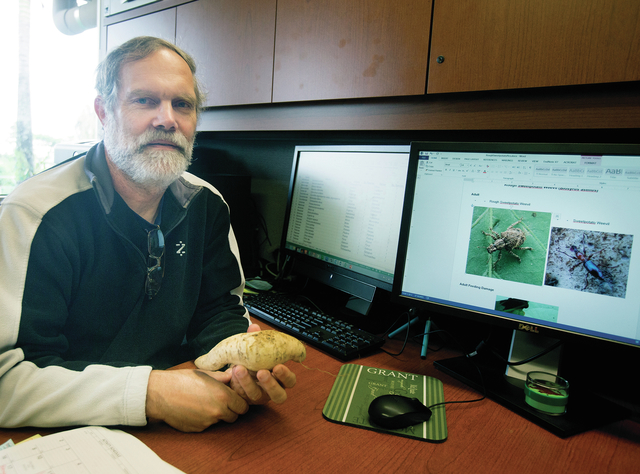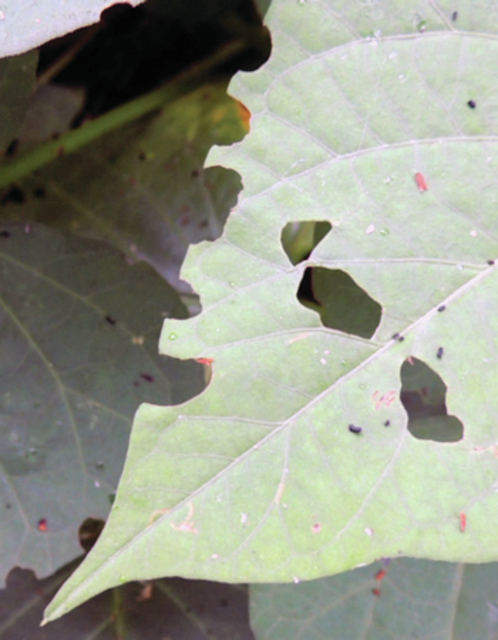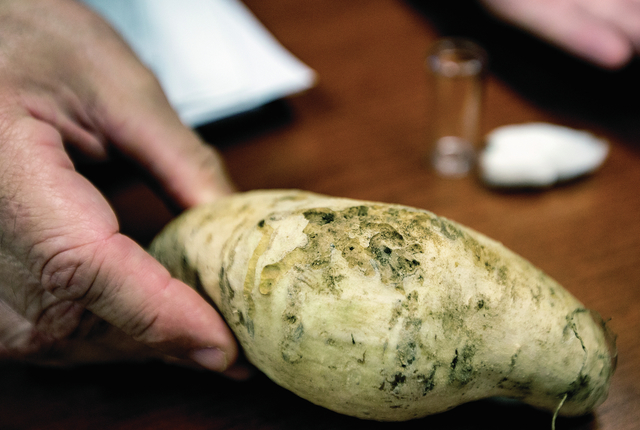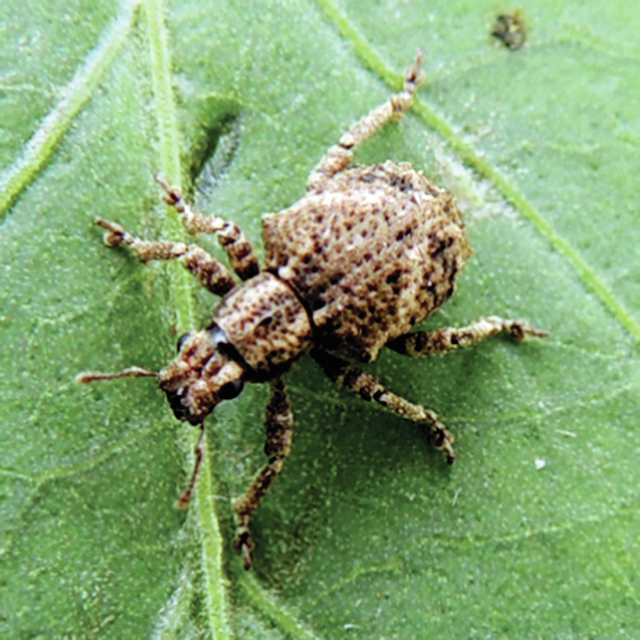HILO — Hawaii Island sweet potato growers are struggling to protect their crops from an invasive insect that makes harvests unmarketable.
Sweet potatoes aren’t known for their beautiful exteriors; it’s what’s inside that counts. But the level of harm caused by the rough sweet potato weevil is severe enough that some farmers are abandoning their crops altogether.
“One grower had two fairly good-sized fields that he just didn’t harvest … it wasn’t worth his effort to dig out the roots,” said research entomologist Grant McQuate of the U.S. Department of Agriculture Pacific Basin Agricultural Research Center.
Another person, McQuate said, stopped growing sweet potatoes entirely.
“At first, we didn’t know what this pest was — all we knew was we weren’t getting harvestable, marketable yields,” said Susan Miyasaka, an agronomist at the University of Hawaii at Manoa’s College of Tropical Agriculture and Human Resources.
The rough sweet potato weevil is native to Southeast and Eastern Asia, the Philippines, Japan, Tawain and China. It was first collected in 2008 at a farm in Waipio, Oahu.
The insect appeared on Kauai in 2011 and was detected in Pepeekeo in 2014. It’s not known how it got here, or how it got to its first location in Oahu.
The weevil’s larval stage feeds on the outside of the potato. And while a larvae’s eating habits don’t damage the taste of the potato, they create large tracks around the exterior.
“It causes blemishes; you can see the damage from the outside, and that’s a marketing problem,” McQuate said.
Miyasaka said breaking the potato’s skin also can allow plant diseases into the tuber, causing rot.
The Okinawan sweet potato, known for its bright purple inside, is primarily an export crop. Most farms are along the Hamakua Coast and in the North Hilo district.
In 2013, 12 million pounds of sweet potatoes were exported to the mainland.
“The Okinawan variety, for whatever reason, doesn’t grow well on the mainland,” Miyasaka said.
The sweet potatoes are treated at an irradiation plant in Keaau to kill off other pests specific to the plant. But that method doesn’t help potatoes already affected in the field by the weevil.
Certain types of chemical pesticides can control the pest enough to preserve yields, Miyasaka said. She also is applying for funding to investigate usage of the same biopesticide used to control coffee berry borer, and to begin sweet potato growing trials that would determine whether any crop varieties have natural resistance.
McQuate is researching the weevil’s biology, as well as ways to improve detection and trapping.
One way to tell if a crop has been affected by the weevil is to look at the sweet potato’s leaves. Adults feed only on leaves, and make distinctive semi-circular notches along outer edges.
Part of the problem, McQuate said, is growers inadvertently transport the weevils from field to field when they transport potato cuttings. Adults are nocturnal and difficult to spot during the day.
“Because the weevil doesn’t fly, basically, you’re bringing the pest onto your property,” McQuate said. “They hang on to cuttings, or there could be eggs on cuttings — or they could just jump on you when you’re in the field.”
Email Ivy Ashe at iashe@hawaiitribune-herald.com.










